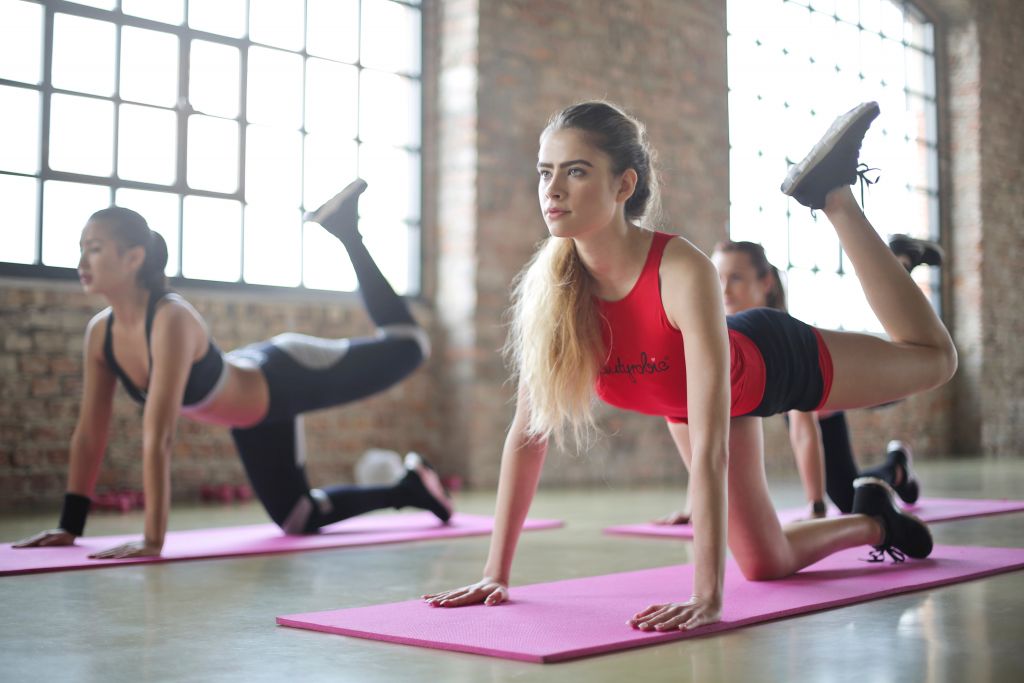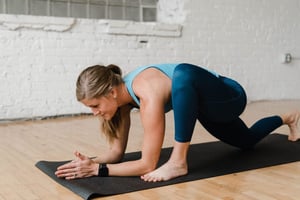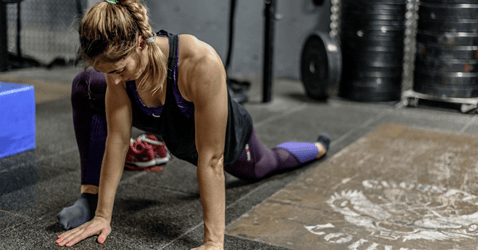
Mobility vs Stability
In the fitness world, there seems to be an evergreen trend: mobility vs stability. Despite the importance always being present, there still seems to be some confusion of the differences and benefits of each. In this post we go over both trends, as well as some exercises that improve stability, mobility, and flexibility.
Things come and go in nutrition, and the pendulum always swings. For a few years, the ketogenic diet got all the attention, then it was intermittent fasting, now it’s the carnivore diet, and who knows what will come next.
A similar thing happens in fitness and exercise. CrossFit gets all the attention in the world. Then, people want to know if HIIT training is truly as beneficial as people make it out to be.
The thing is, most of these topics are best in certain situations. It’s not too often that you find a trend that everyone could benefit from nearly 100% off the time.
But, it happens. In fact, it’s happening right now.
Mobility is the new trendy term in fitness, and for a good reason. You don’t really hear about flexibility too much anymore. You almost always hear about mobility, and maybe even stability, too.
So, what’s the deal? Mobility vs stability: how are they different, and how can they benefit you?
FLEXIBILITY
In my own words, flexibility is the ability for the body, a joint, or more than one joint (however you want to look at it) to move freely and easily through a large range of motion. When you think of flexible people, you may think of dancers or gymnasts. They have a unique ability to take their joints through extremely large ranges of motion with ease. How does this differ from mobility?
MOBILITY
I would define mobility as the body’s (or joint(s)) ability to move through its full range of motion with stability and control. Being flexible can be a cool thing, but if you don’t have complete control over the range of motion that you can produce, that may increase your risk of injury. Read this blog for some great examples of at effective at-home mobility workouts!
STABILITY
You may have noticed this word when describing mobility. Stability is simply the ability for the body (or joint(s)) to have control over a movement or certain position.
If you were to think about these terms as a math equation, here’s what it would look like:
Flexibility + Stability = Mobility
When you are flexible, you are able to move your body through greater ranges of motion. When you are mobile, however, you are able to move your body through greater ranges of motion with complete control over the entire range of motion.
When it comes to your workouts and your everyday life, it pays to be mobile. The more mobile you are, the less likely you are to be injured. The more mobile you are, the less likely you are to have chronic aches and pains. The more mobile you are, the easier it is to perform, play with your kids, or whatever that may look like for you.
So, how do you go about gaining mobility vs stability?
The first step would be to increase the range of motion in areas that need it most. Let’s say that you have a hard time squatting, and it’s due to your tight hips. A great exercise to help stretch your hips is the frog stretch.
Here is a video on the Frog Stretch
After creating a larger range of motion through the stretch, it’s time to strengthen that new found range of motion. This could be through joint articulation, or doing contract/relax movements like the 90/90.
Remember, this isn’t something that will change the way you move if you do it once or twice. This will need to be implemented into your daily routine on a consistent basis for a long period of time. But, it’s well worth it.
So if the question is what are the differences between mobility vs stability, the answer is that the combination of both is important for your long-term fitness goals.
ABOUT THE AUTHOR
Adam is a fitness professional, baseball fan, and cookie fanatic based in Fort Collins, Colorado. After hanging up the cleats, he found a strong interest in the human body and how it performs. Since then, Adam has been transforming lives through fitness in a fun and encouraging atmosphere. As an ACE CPT and Fitness Nutrition Specialist, he is constantly moved to help people improve in all walks of life
Subscribe Here!
Topics
- Accessible Fitness Machines (1)
- American Diabetes Association (1)
- American Heart Month (2)
- Awareness (3)
- Benefits of Kale (1)
- Best Fitness Websites (1)
- Breast Cancer (1)
- Breast Cancer Awareness (4)
- Buyer Beware (1)
- Cancer (1)
- Cancer Awareness (4)
- Carbohydrates (1)
- Cardio Aid (2)
- Cardio Equipment (7)
- Celebrity Fitness (1)
- Childhood Obesity (2)
- Christmas List (1)
- Commercial Fitness (12)
- Community (1)
- Corporate Wellness (5)
- Cortisol (1)
- Crossfit (2)
- Crosstrainer (1)
- Deals and Discounts (10)
- Diabetes Awareness (1)
- Diamondback Ellipticals (1)
- Diet (1)
- Diet and Nutrition (31)
- Diet Myths (1)
- Dietary Lifestyle Options (1)
- Eating Clean (1)
- EFX (1)
- Elliptical (14)
- Ellipticals (6)
- ElliptiGo (2)
- Energy (1)
- Exercise (6)
- Exercise Accessories (1)
- Exercise and Diabetes (1)
- Exercise at Work (1)
- Exercise Bike (6)
- Exercise Equipment (26)
- Exercise Equipment Demos (11)
- Exercise Machine (5)
- Exercise Prevents Cancer (1)
- Exercising at Night (1)
- Expresso Bike (2)
- Expresso Stationary Bike (2)
- Fat Loss (7)
- Fitness (23)
- Fitness Accessories (2)
- Fitness and Exercise (99)
- Fitness at Work (1)
- Fitness Blogs (6)
- Fitness Books (1)
- Fitness Education (75)
- Fitness for Special Needs (1)
- Fitness Gifts (1)
- Fitness Journey (5)
- Fitness Machine (11)
- Fitness Machines (4)
- Fitness Motivation (13)
- Fitness on the Go (1)
- Fitness Room (2)
- Fitness Stocking Stuffers (1)
- Fitness Technology (1)
- Fitness Tips (2)
- Fitness Tracker (1)
- Fitness Videos (1)
- Fitness Wearables (1)
- Flexibility (2)
- Food Myths (3)
- Fun and Educational Videos (9)
- Functional Training (3)
- Getting Back in Shape (1)
- GFX (1)
- Gift Ideas (1)
- Gluten Free (1)
- Goals (1)
- Gym Safety (1)
- Health (6)
- Health and Fitness (96)
- Health Myths (1)
- Healthy Eating (2)
- Healthy Food (6)
- Healthy Lifestyle (3)
- Healthy Recipes (4)
- Heart Disease (1)
- Heart Health (11)
- HIIT (7)
- HIIT at Home (7)
- Hip Hop (1)
- Holiday Eating (1)
- Holiday Fitness (1)
- Holiday Meals (1)
- Holiday Parties (1)
- Holidays (1)
- Home Fitness (77)
- Home Fitness Equipment (43)
- Home Fitness Machine (2)
- Home Gym (19)
- Home Gym Design (4)
- Hospitality Fitness (1)
- How to Get More Energy (1)
- Hydration (1)
- IFT (1)
- Injury Prevention (1)
- Insider (1)
- Inspiration (1)
- Inspire Ellipticals (1)
- Kale (1)
- Kids Fitness (2)
- Let's Move! (1)
- Low Cholesterol (1)
- Meal Planning (3)
- Men's Fitness (2)
- Metabolism Booster (1)
- Michelle Obama (1)
- Mobility (3)
- Motivation (1)
- Motivation to workout (4)
- Movember (1)
- New Product News (24)
- New Products (1)
- Nu-Step (1)
- Nustep (1)
- Nutrition (2)
- Nutrition Myths (2)
- Office Exercise (1)
- P3 News (7)
- P3 Retail Store News (12)
- Paleo (1)
- Partnership for a Healthier America (1)
- Personal Training (1)
- Postpartum Exercise Routine (1)
- Precor (17)
- Precor Ellipticals (6)
- Precor Treadmills (4)
- Push Pedal Pull (28)
- Recovery (1)
- Recumbent Bike (4)
- Recumbent Cross Trainers (1)
- Resistance Training (2)
- Resolutions (1)
- Rowing Machine (7)
- senior fitness (1)
- silver sneakers (1)
- Site Blog (33)
- Stay Active During Holidays (1)
- Strength Training (11)
- Stress (1)
- Stress Weight (1)
- Stretching (2)
- Strong is the New Skinny (1)
- Successful Resolutions (1)
- Trade in Elliptical (1)
- Trade in Fitness Equipment (1)
- Trade in Treadmill (1)
- Treadmill (13)
- Treadmills (7)
- True Treadmills (1)
- Used Elliptical (1)
- Used Equipment (3)
- Used Exercise Machines (1)
- Used Fitness Equipment (1)
- Used Treadmill (1)
- Valentine Workout (1)
- Valentine's Day (1)
- Vegan (1)
- Vibration Training (5)
- Warming Up (1)
- Weight loss (17)
- Weight Loss Booster (1)
- Weight Training (3)
- Women's Fitness (4)
- Working Out (5)
- Workout Inspiration (2)
- Workout Partner (2)
- Workouts (5)

